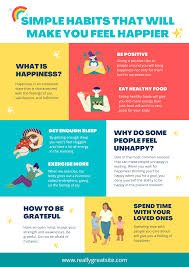In 2025, the way we live is undergoing a profound shift. People are seeking meaning, balance, and connection in a world that often feels overwhelming. Lifestyle trends reflect this desire for authenticity, with a focus on intentional living, digital wellness, and community-driven experiences. These movements aren’t just fads—they’re responses to a growing need for mental clarity, sustainability, and human connection. This article explores how these trends are shaping daily life, their practical applications, and the challenges they face, offering a roadmap for embracing a more fulfilling lifestyle.
Intentional Living: The New Minimalism
Minimalism has long been a buzzword, but in 2025, it’s evolving into something deeper: intentional living. This approach isn’t just about decluttering your closet or owning fewer things—it’s about making deliberate choices in every aspect of life, from possessions to relationships to time. The goal is to prioritize quality, purpose, and joy over mindless accumulation.
Intentional living starts with physical spaces. People are curating homes with fewer, but more meaningful, items—think handcrafted furniture, heirloom pieces, or eco-friendly materials. A 2024 survey by The Minimalist Co. found that 62% of respondents felt happier after reducing their possessions to focus on items that sparked joy or utility [The Minimalist Co.]. This trend aligns with sustainability, as consumers opt for durable, ethically made products over fast fashion or disposable goods. Brands like Everlane and Patagonia, known for transparent supply chains, are thriving as shoppers seek value-driven purchases.
Beyond possessions, intentional living extends to time management. People are saying no to overpacked schedules, choosing activities that align with their values. For example, instead of attending every social event, someone might prioritize a weekly dinner with close friends or a solo hike to recharge. This selective approach reduces stress and fosters deeper connections. A 2025 report by MindBodyGreen noted a 40% increase in mindfulness app downloads, reflecting a desire to focus on the present moment [MindBodyGreen].
Relationships are also under the intentional living lens. People are nurturing fewer, but stronger, bonds, moving away from superficial networking toward authentic friendships. This shift is evident in the rise of “friendship audits,” where individuals assess which relationships truly enrich their lives. Social media platforms like Instagram are seeing hashtags like #intentionaliving gain traction, with over 1.2 million posts showcasing curated, meaningful lifestyles [Instagram Data, 2025].
The challenge lies in avoiding performative minimalism, where the aesthetic of simplicity overshadows its substance. Social media can pressure people to “look” minimalist rather than live it, leading to new forms of consumption, like buying expensive “minimalist” decor. Accessibility is another hurdle—sustainable, high-quality goods can be costly, making intentional living feel out of reach for some. To counter this, thrift stores and swap events are gaining popularity, offering budget-friendly ways to embrace the trend. Intentional living in 2025 is about aligning actions with values, creating space for what truly matters.
Digital Wellness: Finding Balance in a Connected World
As technology dominates daily life, digital wellness has emerged as a critical trend in 2025. With the average person spending over seven hours a day on screens [Statista, 2024], many are seeking ways to reclaim their time and mental health. Digital wellness isn’t about ditching devices—it’s about using them mindfully, balancing connectivity with real-world presence.
One popular practice is the digital detox, where individuals take breaks from screens to focus on offline activities. Retreats like Unplug Meditation’s weekend getaways in California have seen a 50% increase in bookings, offering guided meditation, nature walks, and tech-free zones [Unplug Meditation]. For those who can’t escape to a retreat, apps like Forest and Freedom help limit screen time by gamifying focus or blocking distracting sites. These tools are especially popular among Gen Z, who report feeling overwhelmed by constant notifications [Forbes, 2025].
Another aspect of digital wellness is creating intentional tech habits. People are setting boundaries, like phone-free bedrooms or designated “no-scroll” hours. Blue-light-blocking glasses and screen filters are also on the rise, addressing eye strain and sleep disruption. A 2025 study by Sleep Foundation found that 70% of participants who reduced screen time before bed reported better sleep quality within a week [Sleep Foundation].
Workplaces are joining the trend, with companies offering “digital downtime” policies, encouraging employees to disconnect after hours. This is particularly relevant as remote work remains common, blurring the lines between work and personal life. Microsoft’s 2025 Work Trend Index reported that 55% of employees want clearer boundaries around digital communication, prompting tools like Slack’s “do not disturb” features to gain traction [Microsoft Work Trend Index].
Challenges include accessibility and dependency. Not everyone can afford retreats or premium apps, and some professions require constant connectivity, making detoxes impractical. There’s also the risk of “digital shaming,” where those who can’t unplug feel judged. To address this, community-driven solutions like local “phone-free” meetups are emerging, offering free, inclusive spaces to disconnect. Digital wellness in 2025 is about finding a personal balance, using technology as a tool rather than a tether.
Community-Driven Experiences: Building Connection Locally
In a world that often feels fragmented, community-driven experiences are bringing people together in meaningful ways. In 2025, there’s a growing emphasis on local, shared activities that foster connection, resilience, and a sense of belonging. From urban gardening to skill-sharing workshops, these initiatives are redefining how we engage with our neighborhoods.
Urban gardening is a standout trend. Community gardens are sprouting in cities worldwide, offering spaces to grow food, share knowledge, and connect with neighbors. In Brooklyn, New York, the GreenThumb program has expanded to over 600 gardens, with participants reporting improved mental health and stronger community ties [NYC Parks, 2025]. These gardens also promote sustainability, reducing reliance on industrial agriculture. Home Depot’s 2025 gardening report noted a 30% increase in seed and planter sales, driven by urban dwellers seeking local food sources [Home Depot].
Skill-sharing is another way communities are bonding. Platforms like Skillshare and local meetups allow people to teach and learn skills, from pottery to coding, in person or online. In 2025, libraries and community centers are hosting “skill swaps,” where neighbors exchange expertise—think a baker teaching sourdough basics in exchange for guitar lessons. These events build trust and reduce costs, as participants gain skills without expensive classes [Eventbrite, 2025].
Cultural events, like pop-up markets and storytelling nights, are also thriving. These gatherings celebrate local talent and diversity, offering alternatives to commercial entertainment. For example, Toronto’s Night Market series has drawn thousands to sample food, art, and music from local creators, fostering pride and connection [Toronto Star, 2025]. Social media amplifies these efforts, with hashtags like #communityfirst gaining 800,000 posts on Instagram [Instagram Data, 2025].
Challenges include ensuring inclusivity and sustainability. Community initiatives must be accessible to all, regardless of income or mobility, and avoid gentrifying neighborhoods. Funding is another hurdle, as many projects rely on grants or volunteers. Partnerships with local businesses and nonprofits are helping, but long-term viability requires creative solutions. Despite these obstacles, community-driven experiences are proving that connection is a powerful antidote to isolation.
The Path Forward
The lifestyle trends of 2025—intentional living, digital wellness, and community connection—reflect a collective desire for meaning and balance. Intentional living encourages deliberate choices, digital wellness promotes mindful tech use, and community experiences rebuild local bonds.
| Trend | Key Drivers | Challenges | Future Outlook |
|---|---|---|---|
| Intentional Living | Desire for mental clarity, sustainability, value-driven choices | Performative minimalism, accessibility | Wider adoption of sustainable practices, focus on meaningful experiences |
| Digital Wellness | Overuse of screens, need for mental health, workplace policies | Accessibility, dependency on tech | More inclusive tools, normalized digital boundaries |
| Community-Driven Experiences | Desire for connection, sustainability, local engagement | Inclusivity, funding, gentrification risks | Growth of local initiatives, stronger neighborhood ties |
In conclusion, 2025 is a year of redefining how we live. By embracing intentional choices, balancing technology with presence, and fostering community, people are crafting lives that are not only fulfilling but also resilient. These trends invite us to slow down, connect deeply, and live with purpose in an ever-changing world.


